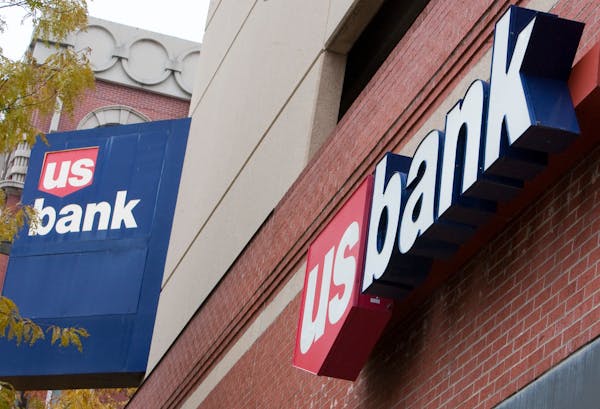Ask Andy Cecere if orchestrating the biggest deal for U.S. Bancorp in two decades will be the major hallmark of his tenure as CEO, and he gives a diplomatic — and very Minnesotan — answer.
"I don't think about legacy too much," he said.
Cecere, 62, who has worked at the company for decades and took the helm in 2017, sat down with the Star Tribune this month just a few days after U.S. Bank closed its $8 billion acquisition of MUFG Union Bank, its biggest deal since 2001.
After deregulation opened up interstate banking in the late 1980s, U.S. Bank aggressively bought other banks to build itself into the nation's fifth-largest bank. Its biggest deal came in 2001, a $21 billion combination with Milwaukee-based Firstar Corp.
With the purchase of MUFG Union Bank, it joined a more recent wave of bank mergers driven by another phenomenon: the arrival of digital services. U.S. Bank increased its assets by more than 10% and becomes a much more significant player in California, the nation's most populous state.
The deal took several months longer than anticipated to get the green light from U.S. regulators. But now that it has, the company is planning to convert MUFG Union Bank's 300 branches to the U.S. Bank name over Memorial Day weekend. They will join a network of about 2,200 U.S. Bank branches.
Some excerpts from the conversation:
Q: What appealed to you most about buying MUFG Union Bank?
A: It is a positive for almost every constituency that you think about. So first of all, from a customer standpoint, this will be a great advancement in digital capabilities and products and services versus what (Union Bank customers) currently have. ... From a community standpoint, we signed a $100 billion community benefits plan. I'm convinced that the communities will be better because of that. ... From a bank standpoint, this is a positive transaction because we're in an environment where the importance of scale has never been more relevant. And this gives us a step function increase in scale. We add a million customers. We add 200,000 small businesses. And we do it in a way that's quite efficient.
Q: Is scale more important now today than it was before the shift to digital banking?
A: It's more relevant today because of technology. If you are a $10 billion bank or a $700 billion bank, you need to build a digital app. If you're able to leverage your size by putting your customers in a digital app, that's where scale becomes important. That's number one. Number two is we're in an environment where U.S. Bank is not competing just with other banks. We're competing with other technology platforms — the likes of Apple and Amazon and Google — that also have electronic financial services capabilities.
Q: California is already your largest market, right?
A: It is from a branch standpoint. ... We have about 450 branches in California. We're going to go from about 10th or 11th in terms of market share to top five. So that's going to be quite important. So we'll be able to leverage our marketing, our presence, our brand in a much more effective way by being a top five player [in California].
Q: Do you foresee moving some corporate functions out west?
A: I don't expect that. We're going to have community leaders like we do in all markets where we have people represent us in the markets that we serve. But our corporate headquarters will continue to be the Twin Cities — and Minneapolis, specifically. I've been coming downtown for 37 years. So this is my home. We have 13,000 employees in Minnesota. We have over 100 branches. It is our corporate headquarters. Most of our senior staff is here. And I, personally, and we at U.S. Bank are committed to Minneapolis and the Twin Cities.
Q: How did this deal with MUFG Union Bank come about?
A: We had an investment services transaction ... with them. So we knew the management very well. Union Bank has always been on our list. If you think about the California marketplace — and I told you how important California is — there are only a few banks that could be a meaningful move for us there in California. Union Bank certainly was one of them.
So we got in touch and we worked together in getting in touch with the Japanese ownership and the CEO. We had a number of discussions. What was important to them is a partnership. And that's what this is. This is a partnership. And this is a partnership in the sense that they're retaining their corporate business and institutional business that will be managed out of New York. I would expect that we'll have continued relationships with them in terms of serving their institutional and corporate customers while we take on their retail and small-business customers.
Q: So it sounds like you approached them.
A: We got together is the way I would say that. We were able to talk to each other, and it came about over a period of time. It was interesting. It was all during the COVID period. So it was all via calls. And and given that Tokyo has a 12 or 13 hour time difference, it was often an early morning call or a late night call.
Q: It took a little bit longer to close the deal than you were expecting.
A: It did ... I think it was just a function of the environment that we're in, and there were some regulatory chairs that were yet to be filled. And all those played into the timeframe being extended a bit.
Q: Some analysts were beginning to wonder if the deal was going to go through. Were you worried?
A: Worried would not be the term. As deals get extended, there's more risk by extension. There's the uncertainty of the employee base, which you can completely understand. They don't know what their ultimate outcome will be. There's the uncertainty of the customer base. We had a number of community discussions. And there's the uncertainty of the community benefits plan. So all those things created uncertainty. I believed that the fundamentals of the deal and the benefits of the deal were were sound enough that ultimately it was going to get approved.
Q: Do you think this will be your major legacy as CEO?
A: I don't think about legacy too much. But I think about what's best for the bank and the customers and the employees. And I think this is a real positive for all the reasons I talked about. I think the other thing it's done, it's really brought together our team in terms of this great opportunity in this step function we're going to achieve. We've had multiple hundreds of people working on this transaction for the last year and a half. And they've done an outstanding job dealing with the data process, with the community benefits plan, with the financial integration, with the customer capabilities, with the digital infrastructure, all those things. The team has done a tremendous job.
Q: Do you see this era of bank mergers slowing down at all, or do you think it's going to continue?
A: When I started in banking, there were 15,000 banks. And today, there are just under 5,000 banks. I think there will always be thousands of banks. But I do think the importance of recognizing the requirements for technology and scale will drive additional consolidation. But there will always be, just like there have always been, small community banks and midsize banks and large banks. I just think there'll be fewer of them.
Q: Are you hoping to have more of a national presence?
A: That's not an objective. We're in 26 states, as you know. The objective is to serve the communities in the best possible way, to have the best product products and services for the customers that we serve, and to serve those markets. But we're not looking to try to get into each state or anything of that sort.

Tough new EPA rules would force coal-fired power plants to capture emissions or shut down
Union Pacific's first-quarter profit creeps up 1% as railroad limits expenses
US applications for jobless claims fall to lowest level in 9 weeks

